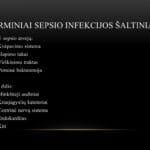Vacuolated neutrophils, marked by cytoplasmic vacuoles, are a crucial indicator of potential severe infections and inflammatory responses. Their presence in a blood smear can signal a “panic value,” prompting immediate physician notification for timely diagnosis and treatment. While Staphylococcus aureus is the most common pathogen associated with them in blood cultures, other bacteria like Pseudomonas aeruginosa and Escherichia coli can also be implicated. It is important to note that vacuolated neutrophils (toxic vacuolation) can also arise from conditions other than infection, highlighting the importance of considering the clinical context and other accompanying toxic changes in neutrophils.
Understanding Vacuolated Neutrophils
Vacuolated neutrophils are neutrophils (a type of white blood cell) containing vacuoles (membrane-bound compartments) within their cytoplasm. This vacuole formation, known as toxic vacuolation or toxic vacuolization, is a cellular response to severe infections and inflammatory conditions. It’s crucial to understand that not all neutrophil vacuoles signify “toxic vacuolation.” True toxic changes should be accompanied by other morphological abnormalities in the neutrophils. Think of neutrophils as the first responders of your immune system, rushing to the site of infection. These vacuoles appear as clear spaces within the cell’s cytoplasm.
Clinical Significance of Vacuolated Neutrophils
The presence of vacuolated neutrophils holds significant clinical weight, often pointing towards a serious infection brewing. This observation frequently aligns with a positive culture result, confirming the presence of bacteria or other infectious agents.
- Infection Detection: A strong correlation exists between the presence of vacuolated neutrophils and positive microbiologic cultures, indicating infection. These infections can originate from various sites in the body, not just the bloodstream.
- Panic Value: Some experts suggest designating vacuolated neutrophils as a “panic value” in blood smears, requiring immediate notification of the attending physician due to the potential for serious underlying infection, like sepsis. Curious about the principle underlying cognitive behavioral therapy?
- Prognostic Indicator: A 1998 study in Hematology (analyzing 148 cases) found a high correlation between vacuolated neutrophils and serious infections, suggesting their potential use as a prognostic indicator. This means their presence may suggest how severe an infection might become.
- Pathogens Involved: In blood cultures, Staphylococcus aureus is most frequently associated with vacuolated neutrophils. Other common pathogens include Pseudomonas aeruginosa and Escherichia coli. However, context matters. While vacuoles often point towards infection, they can sometimes appear for other reasons, so doctors always consider the bigger picture.
Diagnosing Vacuolated Neutrophils
- Blood Smear Examination: Vacuolated neutrophils are detectable on peripheral blood smears through microscopic examination by trained medical technologists and pathologists. This involves carefully examining the shape and other characteristics of the neutrophils to determine if the vacuoles are a sign of infection or just an artifact of the testing process.
- Differential Diagnosis: Distinguishing true toxic vacuolation from other causes of vacuole formation in neutrophils is crucial. EDTA storage artifact, where vacuoles form due to prolonged storage in EDTA tubes, needs to be differentiated from true toxic vacuolation. This requires careful examination, noting that artifact vacuoles are typically few and not accompanied by other toxic changes (e.g., toxic granulation, Döhle bodies). Other conditions can also cause vacuolation in neutrophils, emphasizing the importance of considering the overall clinical picture and other laboratory findings. For a deeper understanding of environmental factors, explore this abiotic factor trainer.
The Causes of Vacuolation in Neutrophils
Vacuolation in neutrophils, the formation of those tiny bubble-like pockets, occurs primarily in response to severe infections or inflammatory conditions. Let’s delve into the reasons behind this phenomenon.
- Infection: When a serious infection takes hold, neutrophils rush to the scene and engulf the invading germs through a process called phagocytosis. In severe infections, neutrophils can become overloaded, leading to undigested material accumulating within them, forming the vacuoles.
- Inflammation: Inflammation, triggered by tissue damage, causes neutrophils to release inflammatory mediators. These chemical messengers can sometimes trigger vacuole formation within the neutrophils as a side effect of the body’s natural defense mechanisms.
- Other Factors: While infection and inflammation are the primary drivers, other factors can contribute to vacuolation. These include certain medications, genetic conditions, and even the aging process, which can affect cellular efficiency.
Current Research and Future Directions
While much is known about vacuolated neutrophils, research continues to explore their role in the body’s defense mechanisms.
- Diagnostic Challenges: Differentiating true toxic vacuolation from other causes of vacuole formation remains a key area of focus. Research is ongoing to identify specific morphological features that distinguish true toxic changes.
- “Panic Value” Limitations: While the “panic value” designation raises awareness, it also carries the risk of over-testing and unnecessary anxiety. Further research is needed to refine this approach and ensure its appropriate application.
- Future Research Directions: Ongoing studies aim to determine if vacuolated neutrophils can predict infection severity or treatment response. Identifying specific subtypes of vacuoles with distinct clinical implications is another promising area of investigation. Including patient perspectives and case studies can add a human dimension to this complex topic.
By understanding the complexities of vacuolated neutrophils, healthcare professionals can leverage their presence as a valuable clue in diagnosing and treating infections effectively. The ongoing research promises further advancements in our understanding of these cellular processes, ultimately leading to better patient outcomes.
- Revolution Space: Disruptive Ion Propulsion Transforming Satellites - April 24, 2025
- Race Through Space: Fun Family Game for Kids - April 24, 2025
- Unlocking the Universe: reading about stars 6th grade Guide - April 24, 2025
















